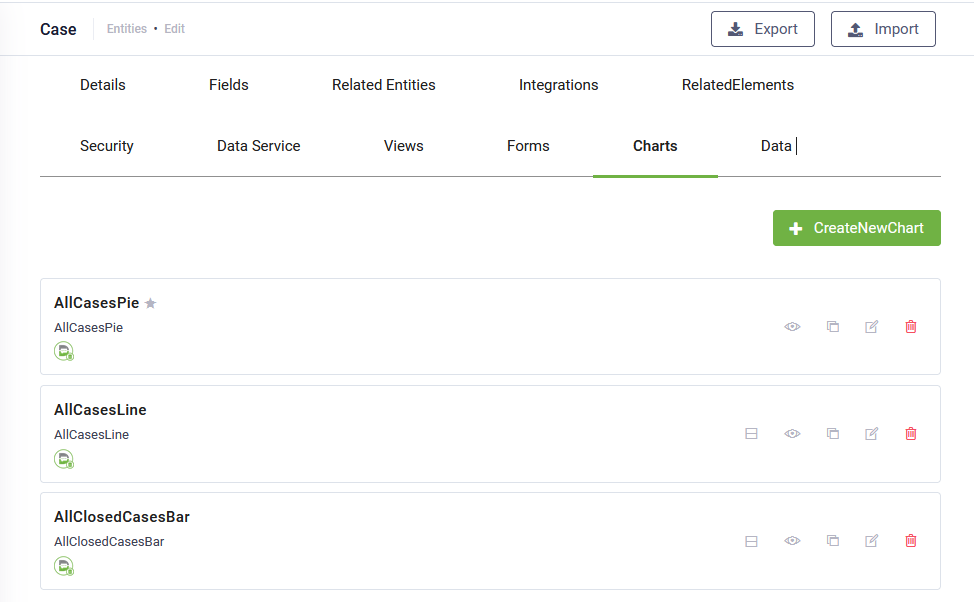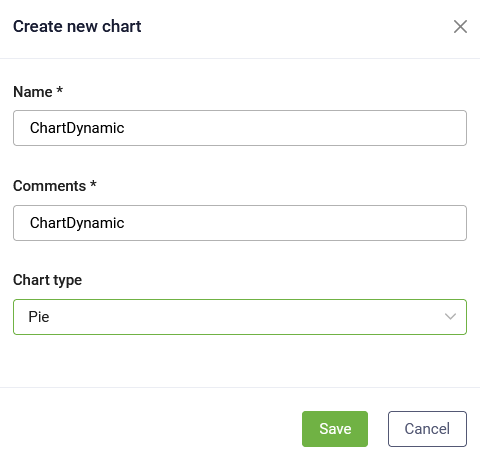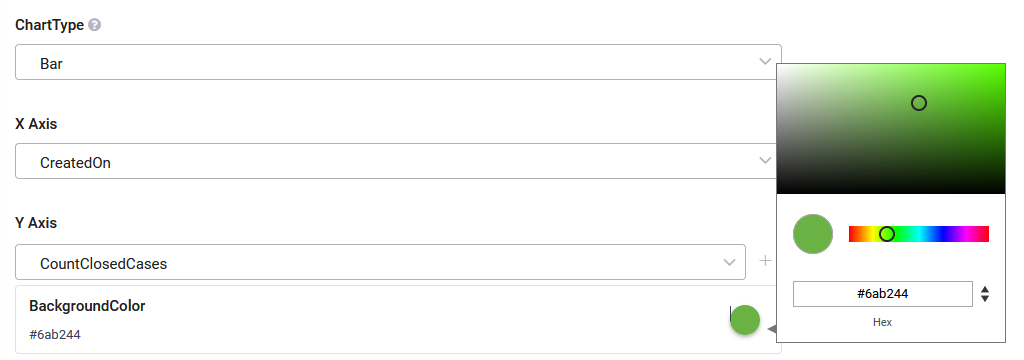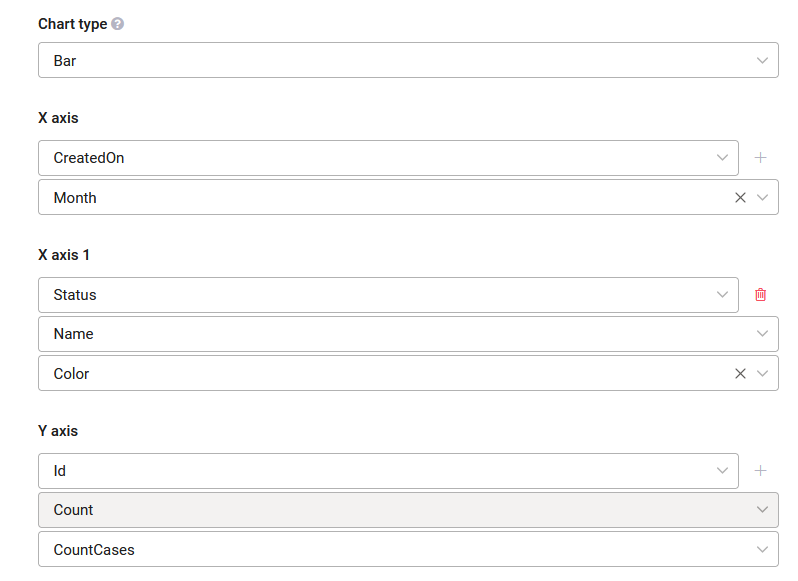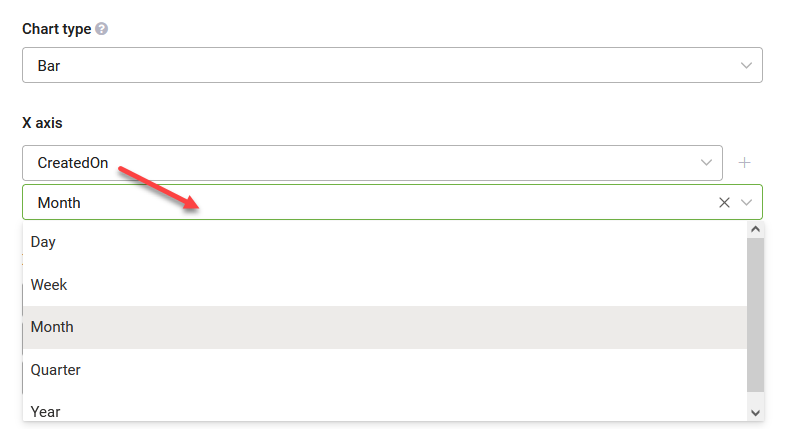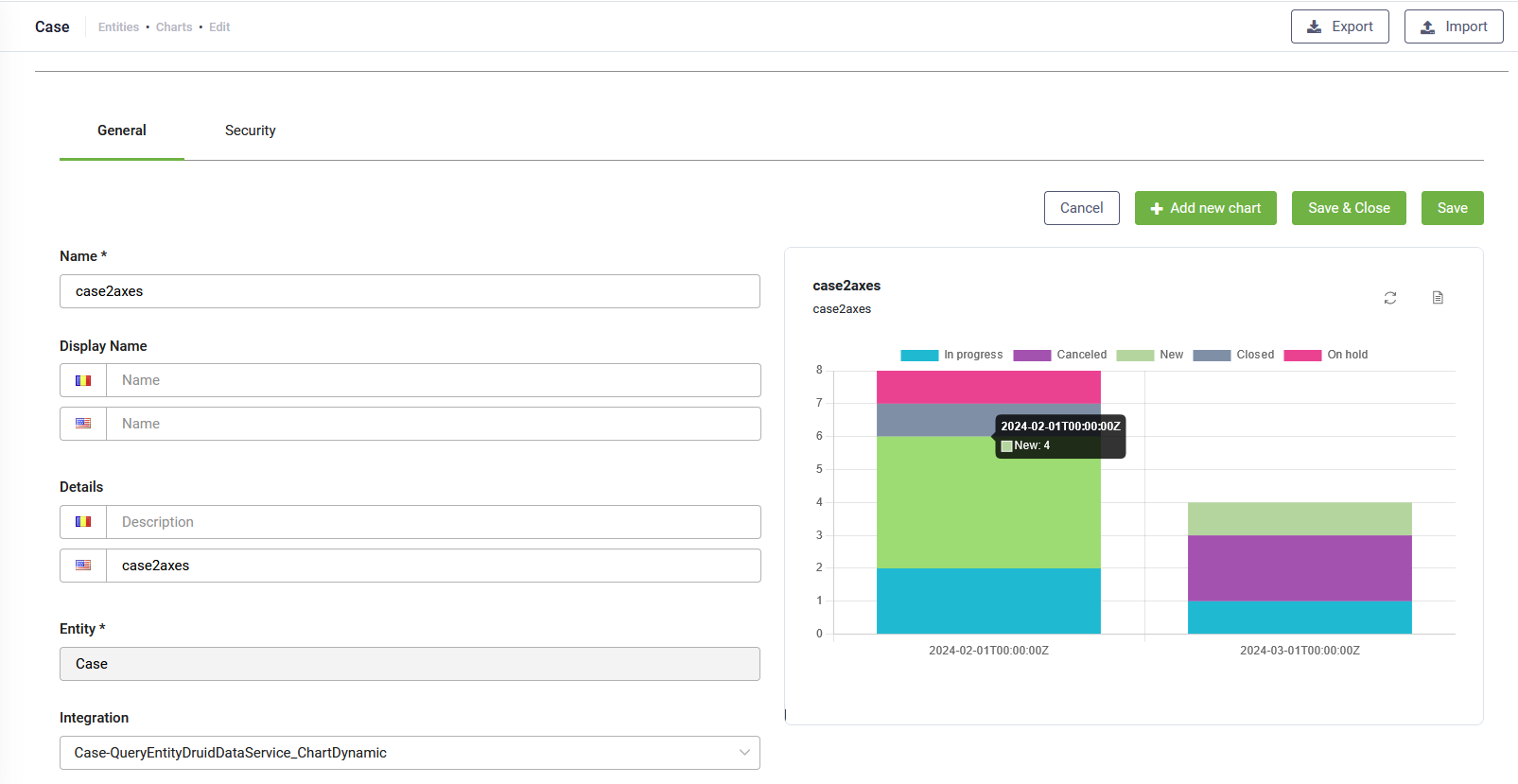Dynamic Charts
Dynamic charts allow you to seamlessly group data directly from the Druid Portal user interface, empowering you to analyze and interpret data more efficiently. Performing data grouping directly from the UI, eliminates the need for JavaScript expertise or additional integration.
Dynamic charts respond instantly to changes in chart settings, providing real-time insights and flexibility for data analysis.
Create dynamic charts
This section outlines the prerequisites and steps for creating dynamic charts.
Prerequisite
- Ensure that your entity contains a field of type Entity that references the [[PageInfo]] system entity.
Step 1. Configure the integration for fetching the business entity records
Step 2. Create the chart
- Go to the entity configuration page and click the Charts tab. The list of charts created for the current entity appears. If there haven’t been defined any charts, the page is empty.
- At the top-right corner of the page, click the Create new chart button. The Create new chart pop-up appears.
- Provide a chart name, add a comment and from the Chart type drop-down, select the desired chart type.
- Click the Save button.
Step 3. Configure chart data
In the Charts list, click the edit icon displayed in line with the desired chart. The chart configuration page appears. Its content varies based on the chart type. The configuration page contains chart settings on the left and a chart preview at the right.
Configure the parameters described in the table below.
|
Parameter |
Description |
|---|---|
|
Display Name |
The Title of the chart, localized. |
|
Details |
The Subtitle of the chart, localized. |
|
Integration |
Select the integration you configured at Step 1. |
| View drill down |
Select the special view you created (if any) to allow users click on the chart to get more insights about the information presented in the chart. For information on how to create a special view for this, see Create special views to drill-down info in Forms and Charts. |
|
Chart type |
The current chart type. You can change the type. |
| Filter By | Filters data in dynamic charts on the custom dashboards. NOTE: This field is available in DRUID 7.10 onwards. |
For chart type specific parameters, refer to the sections below.
Defining bar charts and line charts
Bar and line charts have the same specific parameters.
|
Parameter |
Description |
|---|---|
|
X Axis |
Select the entity field whose values will be shown on the chart’s X axis. |
|
Y Axis |
Select the entity field whose values will be shown on the chart’s Y axis. |
|
BackgroundColor |
Set the bars / dots color. To pick up a color, click on the color icon and either use the color picker or enter the color in hex format. NOTE: If you change the bars/dots color using the Advanced Editor, this color will be overwritten.
|
| Function | Select the function you wish to use for grouping the data in the chart. |
| Field | Choose the field by which to group (apply the function to). |
Defining pie charts
To define data for a pie chart, follow these steps:
- In the Legend section, choose the field(s) storing the data to be displayed as the chart legend.
- In the Data Labels section, select the entity field that serves as the label title when hovering over the pie chart slices.
- Choose the function for grouping the data in the chart(Count, Sum, Average, Min, Max).
- Choose the field by which to group (apply the function to).
- Specify the field for sorting the data.
Create dynamic bar charts with two X-axes
The use of dynamic charts with two X-axes enhances data visualization and analysis capabilities, empowering users to gain deeper insights, make more informed decisions, and effectively communicate findings to stakeholders.
Benefits of using dynamic charts with two X-axes
- Comprehensive Analysis: By plotting data on two x-axes, users can conduct thorough analysis that consider the influence of multiple factors on a given outcome, leading to a deeper understanding of complex relationships within the data.
- Effective Communication: Dynamic charts with two x-axes aid in effectively communicating insights to stakeholders by visually presenting the relationships between data in a clear and intuitive manner, facilitating informed decision-making processes.
- Time-Saving Analysis: By visualizing two datasets simultaneously on a single chart, users can streamline the data analysis process and save time compared to analyzing each dataset separately, enabling quicker identification of insights and trends.
Prerequisite
Ensure that your entity contains a field that stores colors.
Create dynamic charts with two X-axes
To create a dynamic bar chart with two axes, follow the procedure described above for creating a dynamic chart of type bar. Additionally, click the Plus icon next to the X-axis. This action reveals another X-axis section where you can select the field and function for grouping the data for the second X-axis.
For the second X-axis, choose the field that stores colors.
To create a dynamic bar chart with two axes, create a dynamic chart of type bar following the procedure described above. In addition, click the Plus icon next to the X axis. Another X-Axis section appears that allows you to select the field and function for grouping the data for the second X-axis.
For the second X-axis, select the field that stores colors.
If you opt for a field of type DateTime, you can group the data by a specific time range: Day, Week, Month, Quarter, or Year.
Example: A chart displaying the number of cases per status per month

